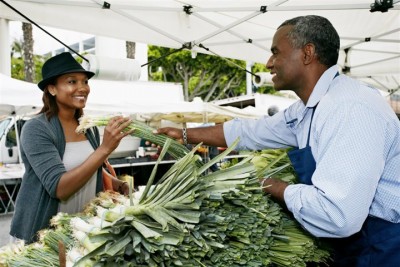 (BPT) – Every time you walk into a grocery store you are hit with a barrage of options: fresh, frozen, canned, store brand, name brand, organic. Even with your shopping list in hand, the choices can be overwhelming. Knowing when you should splurge and where you can save can make all the difference in your grocery store shopping.
(BPT) – Every time you walk into a grocery store you are hit with a barrage of options: fresh, frozen, canned, store brand, name brand, organic. Even with your shopping list in hand, the choices can be overwhelming. Knowing when you should splurge and where you can save can make all the difference in your grocery store shopping.
Meat
“The one thing that you really want to not scrimp on is your meat,” says chef Odette Smith-Ransome of The International Culinary School at The Art Institute of Pittsburgh. Up to 15 percent of the contents of cheaper and frozen meats can actually be water or stock. When it comes to chicken, Smith-Ransome adds that the higher priced chicken is probably a younger chicken. “When they harvest the younger chickens, they’re more tender with a better flavor to them.”
With regard to seafood, chef Nathan Lane of The International Culinary School at The Art Institutes International – Kansas City says that you can tell the difference between wild caught and farm raised seafood, and believes the wild caught is worth the extra money.
Smith-Ransome says that if you are able to get your meat from a farmers market or farm where you can see that the animals are being raised correctly, it is worth the extra money.
Lane encourages you to try farmers markets for produce. Not only are you supporting local farmers, but you are also getting things that are fresh and in season, and he finds it to be comparable to a grocery store or a bit cheaper on most items. The items that may cost a bit more are definitely worth it. Lane says organics are not always worth the extra money, but, “it’s important to treat your body with respect and know that what you’re putting into it is coming from reputable sources.”
Smith-Ransome recommends spending your money on fresh vegetables, by going someplace where you can actually see the fruit and vegetables. When you buy fruit in a big bag, it may be cheaper, but when you get it home you may find items that have bad spots on them. When picking out individual pieces, you will really take care to get good items.
Dairy
“I don’t find much difference between brands of milk and cream,” says Lane. It’s worth the extra money to buy cheese that is really cheese. Smith-Ransome explains that you don’t want the product to say “cheese food” or “cheese product” – indicators that these are processed products with added ingredients to look like cheese. Lane adds that it is worth the money to buy the real imported cheese. For instance skip the “Spanish-Style Manchego” cheese and opt for the real Manchego cheese from Spain. The same goes for Parmesan cheese: the real imported cheese will taste much better than the stuff in a can.
Be careful when purchasing butter or margarine, because the less expensive brands are usually less expensive because they are adding water to the product, says Smith-Ransome. Read the labels and keep on the look-out for water in the list of ingredients and also the word spread. The addition of water can throw off tried and true recipes.
Lane says it’s worth it to splurge for a better ice cream. Cheap ice creams can have air blended in so you want to look for a heavier product than another in the same sized container.
Canned goods
“A lot of times you can find some happy discoveries when you look at canned goods,” says Smith-Ransome. Brand names aren’t always going to be the best for your purpose. She recommends trying out several brands to find one you like. The sweetness, amount of salt and taste from one brand to another can be very different. It all comes down to personal preference. Once you decide on a brand of canned good you like, Lane suggests buying fruits and vegetables that are canned whole. These items will be more versatile.


